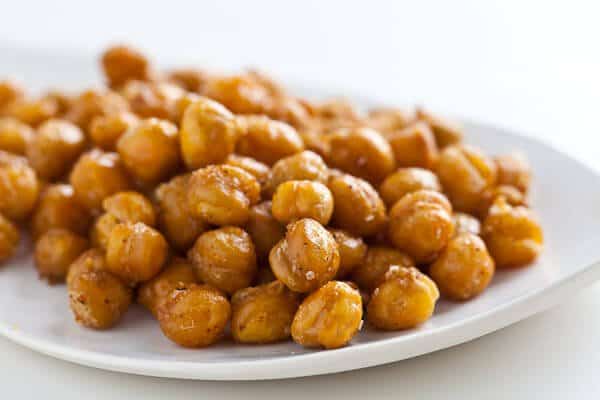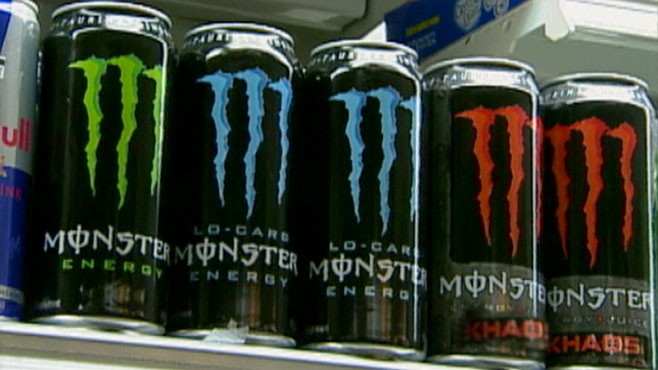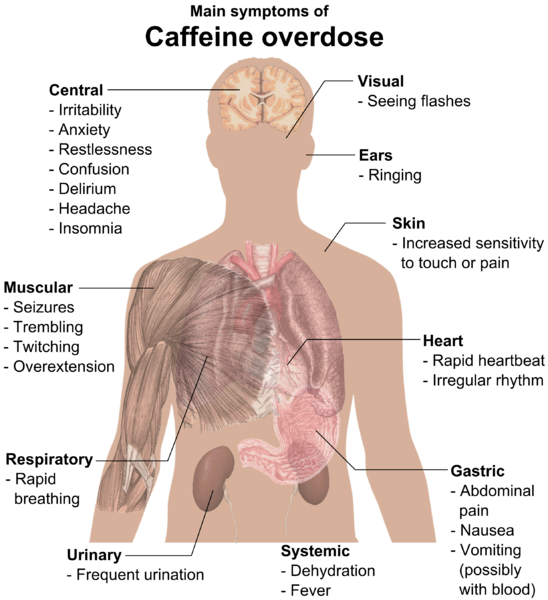
Quinoa is not a true grain, but rather the seed of the Chenopodium or Goosefoot plant. The seed contains a large germ which has a superior nutritional profile when compared with other grains. Quinoa is non-allergenic, can be used in wheat-free or gluten-free diets, and provides complete protein containing all the essential amino acids*, as recognized by the Food and Agriculture Organization of the United Nations. Seeds range in color from ivory to pink, brown to red, or almost black, depending on the variety. There are over 120 species of Chenopodium, but only 3 main varieties are cultivated .
Quinoa (pronounced “KEEN-wah”) is a highly nutritious, cholesterol-free, gluten-free, low-fat whole grain seed, containing all 9 essential amino acids (complete protein)*, yet no saturated fat, sodium, or sugar. Therefore, it is an excellent food for people who wish to reduce their consumption of meat and improve their cardiovascular health. Not only is quinoa’s amino acid profile well-balanced, making it a good choice for vegans concerned about adequate protein intake, but it is also high in the amino acid lysine which is essential for tissue growth and repair. In addition to protein, quinoa offers other health-building nutrients. A very good source of manganese, as well as a good source of magnesium, folate, and phosphorus, quinoa consumption may help to reduce the risk of migraine headaches, diabetes and atherosclerosis. The mild, fluffy, creamy, slightly crunchy texture and somewhat nutty flavor of cooked quinoa seeds makes it a wonderful substitute for rice or couscous.
Although typically consumed in the same way as cereal grasses (wheat, oats, barley, and rye), quinoa is not a cereal grass at all, but rather a member of the leafy green vegetable family that contains spinach, Swiss chard, and beets. Quinoa is instead considered to be a “pseudocereal,” a food that is not a cereal grass but can still be easily ground into flour. The scientific name for quinoa is Chenopodium quinoa.
A recently rediscovered ancient “grain,” quinoa is native to the Andean mountain region of South America that is currently divided up between the countries of Argentina, Bolivia, Chile, Columbia, Ecuador, and Peru, where it has been cultivated for over 5,000 years. Consumption of quinoa became widespread in this region around 3000 BC. Along with maize (corn) and potatoes, quinoa was one of 3 staple foods for the Inca civilization that existed around 1200 AD. Unlike maize and potatoes, quinoa provided a source of complete protein and was called the “gold of the Incas,” due to the way it improved the stamina of their warriors, as well as, the “mother grain.” Today, it is considered a “Supergrain of the Future.”
Quinoa plants can tolerate different growing conditions and thrive in the harsh environment of high altitude mountains, thin and cold air, hot sun, salty or sandy soil, little rainfall, and sub-freezing temperatures. All parts of the plant can be eaten, including not only the seeds that we buy in stores and that may also have been dried and ground into flour, but also the leaves and stems. Betacyanin pigments present in some quinoa leaves produce their bright reddish color, but it’s also possible to find orange, pink, purple, tan, and black quinoa as well. Quinoa leaves taste similar in flavor to the leaves of their fellow chenopods, spinach, chard, and beets.
Most quinoa consumed in the United States still comes from South America. Peru is the largest commercial producer of quinoa and Bolivia the second largest producer. In 2010, these two countries produced nearly 99% of all commercially grown quinoa. Their export sales of quinoa have reached the level of an $87 million dollar business.

The most common type of quinoa sold in stores has an off-white color, but red and black quinoa are becoming more available. Sometimes, a tri-color mixture is offered in packages or bulk bins.
Quinoa is my favorite whole grain because it is:
- A healthy, nutritious, whole grain food, not just for vegetarians and vegans, but for anyone trying to reduce their intake of meat, lower their cholesterol, improve cardiovascular health, and add fiber to their diet.
- Rich in antioxidant and anti-inflammatory phytonutrients.
- Easy to digest.
- Simple to prepare and cooks in less time than other whole grains – just 12 to 15 minutes.
- Economical: A 4-pound bag of “Nature’s Earthly Choice Premium 100% USDA Organic Whole Grain Quinoa” (pre-washed to remove saponins, so you can simply cook and eat, with no need to presoak or rinse) costs about $8.00 at Costco.
- Versatile: Quinoa is light, tasty, blends well with other ingredients, and can be substituted for most grains in almost any recipe. It looks and tastes great on its own, or in any dish, whether soup, salad, entree, or dessert.
- Perfect for summer: Many people eat grains only during the colder months, but quinoa’s lightness, combined with its versatility in cold dishes like salads and desserts, makes it ideal for warm weather.
- An excellent source of nutrition for infants, children, and seniors.
- Delicious by itself, unlike other grains, such as millet or teff.
- One of the best sources of plant protein, containing more protein than any other grain: an average of 16.2 %, compared with 7.5 % for rice, 9.9 % for millet, and 14% for wheat. Some varieties of quinoa are more than 20% protein.
- Quinoa’s protein is high quality, complete protein, with an essential amino acid balance similar to milk, high in lysine, methionine, and cystine. This makes it an excellent food to combine with and boost the protein value of other grains (which are low in lysine), or soy (which is low in methionine and cystine).
- A complete protein providing all 9 essential amino acids and the highest in protein content of all the whole grains, so it’s perfect for vegetarians and vegans.
- High in minerals and B vitamins, such as phosphorus, magnesium, iron, zinc, folate, Vitamin B6, thiamine, riboflavin, as well as, fiber.
- Naturally low-fat and cholesterol-free. The seed contains a small amount of fat:. One cup of cooked quinoa provides 3.4 grams of fat. By comparison, 185 grams cooked lean ground beef provides 33 grams of fat.
- Gluten-free
- Kosher for Passover
- Almost always organic.
Nutrition profile of quinoa:
- High in complete protein with all essential amino acids, including lysine and isoleucine (about 24 grams protein and 109 grams carbohydrate per cup). Thus, quinoa is often called a “super food.”
- Antioxidant phytonutrients, including ferulic, coumaric, hydroxybenzoic, and vanillic acid.
- Antioxidant flavonoids, including quercetin and kaempferol.
- Anti-inflammatory polysaccharides, including arabinans and rhamnogalacturonans.
- Many members of the vitamin E tocopherol family, including important amounts of gamma-tocopherol.
- Antioxidant-promoting manganese.
- Heart-healthy magnesium, folate, and fiber, as well as bone-building phosphorus and copper.
- Contains both soluble and insoluble fiber: Soluble fiber becomes gelatinous as it dissolves in the digestive tract and has a lower glycemic index because of it’s reduced rate of absorption. Soluble fiber also facilitates the passage of fats through the digestive system and slows down the conversion of carbohydrates into glucose. Therefore, quinoa can help to stabilize your blood sugar while providing slow-release energy over a longer period of time. To maximize the benefit of quinoa’s fiber and minimize the impact on your blood sugar, serve quinoa steamed or boiled in its whole form.
- One cup of cooked quinoa has 222 calories, 8 g of protein, 39 g of carbohydrates of which only 3 g are sugar, 5 g of fiber, 3 mg of iron, 118 mg of magnesium, 318 mg of potassium, 78 mcg of folate, 3.5 g of fat and zero.
Basic cooking instructions: To cook, combine one part of quinoa with two parts of liquid (water, low-sodium chicken or vegetable broth) in a saucepan or rice cooker. For 8 servings, use 1 cup of quinoa and 2 cups of liquid. Bring the mixture to a boil, then lower heat and simmer, covered, for about 15 minutes. Cooking is complete when the grains become somewhat translucent and tender, but still chewy, and the white germ has partially detached itself, appearing like a white-spiraled tail around each grain.
Quinoa in its natural state has a coating of unpalatable saponins which protect the seeds from the sun’s strong rays at high altitude, as well as, birds who try to eat the young seeds. Saponin is not harmful to humans but gives quinoa a slightly bitter taste. Always rinse quinoa with cold water in a fine mesh strainer before cooking, to remove saponin, unless the quinoa came pre-rinsed.
Suggestions:
- Quinoa has a light, fluffy, delicate texture when cooked, and its mild, slightly nutty flavor makes it a wonderful substitute for rice or couscous. Add a bit of olive oil, pepper, sea salt, and lemon juice to plain cooked quinoa for extra flavor.
- Add vegetables and seasonings to cooked quinoa to make a variety of dishes. Quinoa goes well with bitter greens like kale, Swiss chard, and turnips.
- Mix cooked quinoa with cinnamon, raisins, toasted slivered almonds or other nuts, honey, granola, berries or other fruit, for a delicious, high-protein breakfast or dessert.
- Serve cooked quinoa for breakfast, with maple syrup or honey, and fresh fruit.
- Combine cooked chilled quinoa with beans, pumpkin seeds, scallions, and coriander. Season to taste and enjoy as a salad.
- Ladle hot curry, soup, or stew over a bowl of plain cooked quinoa.
- Add quinoa to your favorite vegetable soups.
- Substitute quinoa for bulgar wheat to make a delicious, wheat-free tabouli.
- Quinoa is often sold as a dry product similar to corn flakes or noodles.
- Ground quinoa flour can be used in wheat-free and gluten-free baking or added to cookie and muffin recipes.
For a nuttier flavor, dry roast quinoa before cooking it: Simply place uncooked quinoa grains in a skillet over medium-low heat and stir constantly for five minutes.
Storage: Store uncooked quinoa in an airtight container. It will keep for a longer period of time, approximately 3-6 months, if stored in the refrigerator or freezer. If preparing a large batch of cooked quinoa, store it in your refrigerator for up to 1 week.

How quinoa looks when cooked
Diane’s Easy, Yummy Quinoa (Delicious hot or cold!):
Ingredients:
- 2 cups uncooked, pre-rinsed quinoa
- 4 cups water
- 1/2-3/4 cup raisins (Chopped dates and/or figs may be substituted for raisins.)
- 1/2-3/4 cup toasted, slivered almonds
- Ground cinnamon
Directions:
- Bring quinoa and water to a boil. Stir, reduce heat to “low,” and cover pot with lid. Cook for 15 minutes. Remove lid and fluff quinoa with a fork.
- Add raisins and almonds.
- Add plenty of ground cinnamon, to taste.
- Stir to blend thoroughly.
Diane’s Curried Quinoa (Healthy, low-fat, delicious hot as a pilaf or cold as a salad):
Ingredients:
- 2 cups uncooked, pre-rinsed quinoa
- 4 cups low-sodium chicken or vegetable broth
- 2 tsp. curry powder or ginger powder
- 1 cup diced red bell pepper
- 1 cup raisins or chopped dates
- 1 cup toasted slivered almonds, cashew pieces, or chopped pecans
- 1 cup chopped mint or parsley or combination of both
Directions:
- Bring quinoa and broth to a boil.
- Add curry or ginger powder and stir to blend.
- Cover and cook for 15 minutes, until quinoa is soft and fluffy.
- Stir in red bell pepper, raisins, nuts, and parsley.
Andean Bean Stew With Winter Squash and Quinoa (I adapted the following recipe from one published in The New York Times by Martha Rose Shulman on November 6, 2008. Her recipe was originally based on a Chilean bean stew and uses quinoa instead of the corn called for in the authentic version. Make it a day ahead for the best flavor.):
Ingredients:
- 1 pound dried pinto beans, rinsed and picked over, soaked in 2 quarts water overnight or for 6 hours
- 2 tablespoons extra virgin olive oil
- 2 or more medium onions, chopped
- 1 tablespoon sweet paprika
- 4 large garlic cloves, minced
- 1 bay leaf
- 1 (14-ounce) can chopped tomatoes with liquid (or add fresh chopped tomatoes if in season)
- 1 pound winter squash, such as butternut, peeled and cut into 3/4-inch cubes
- 1/2 cup quinoa, rinsed thoroughly
- Freshly ground pepper
- 4 tablespoons chopped fresh basil or parsley
Directions:
- Place the beans and soaking water in a large pot. Add water if necessary to cover the beans by about 2 inches, and bring to a boil. Skim off foam, reduce the heat to low, cover and simmer gently for 60 minutes, or until the beans are tender but intact.
- Heat the oil over medium heat in a large, heavy nonstick frying pan and add the onion. Cook, stirring, until the onion is tender, about 5 minutes, and add the paprika. Stir together for about a minute, and add the garlic. Cook, stirring, for a minute or two, until the garlic and onions are very fragrant but not brown, and stir in the tomatoes and 1/2 teaspoon salt, if desired. Cook, stirring often, until the tomatoes have cooked down slightly and smell fragrant, 5 to 10 minutes. Remove from the heat and scrape the contents of the pan into the pot of beans.
- Bring the beans back to a simmer, add the bay leaf and winter squash, and simmer, covered, for 30 minutes, or until the squash and beans are thoroughly tender. Add the quinoa and simmer for another 20 to 30 minutes, until the quinoa is translucent and displays an opaque thread. Taste and adjust salt. Add a generous amount of freshly ground pepper. Stir in the basil or parsley, simmer for a couple of minutes more, and serve, with cornbread or crusty country bread.
Yield: Serves 6 to 8 generously
Advance preparation: This tastes best if made a day ahead and reheated. The stew will thicken, so you may want to thin it with water and adjust seasonings accordingly. Add the fresh herbs when you reheat. It will keep for at least five days in the refrigerator. It freezes well.
*Essential amino acids: The amino acids regarded as essential for humans are phenylalanine, valine, threonine, tryptophan, isoleucine, methionine, leucine, lysine, and histidine. Additionally, cysteine (or sulphur-containing amino acids), tyrosine (or aromatic amino acids), and arginine are required by infants and growing children. Essential amino acids are “essential” not because they are more important to life than the others, but since the body does not synthesize them. They must be present in our diet, or they will not be present in our body.
References:
- “Quinoa.” Wikipedia, the free encyclopedia. (Source: en.wikipedia.org/wiki/Quinoa)
- Quinoa Corporation: P.O. Box 279, Gardena, CA, 90248-0279, U.S.A. (Telephone: 310-217-8125 and Fax: 310-217-8140). E-mail: quinoacorp@quinoa.net (Source: www.quinoa.net/)
- “Quinoa Kale Salad.” Quinoa Recipes-Cooking Quinoa. (Source: www.cookingquinoa.net/)
- Shulman, Martha Rose. “Andean Bean Stew With Winter Squash and Quinoa.” The New York Times. November 6, 2008.


















